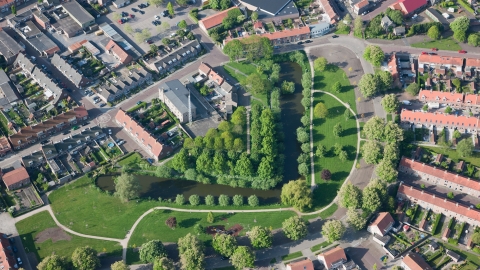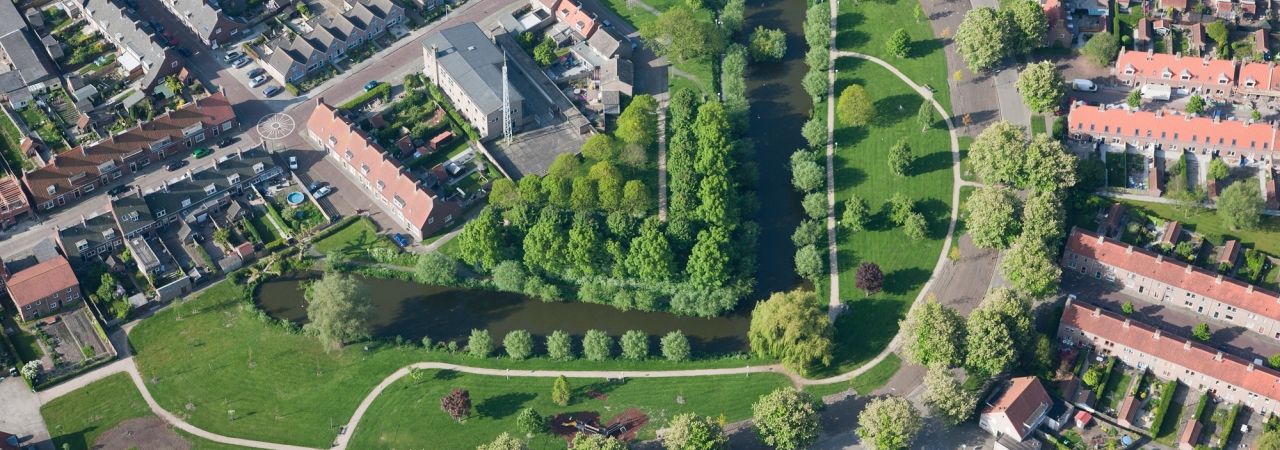When Alexander Farnese, the later Duke of Parma, conquered Oostburg for the Spanish king in 1583, the town had no defence works. Oostburg suffered badly from the floods when the dykes were opened to try and halt Parma’s advance. The surroundings of Oostburg became a desolate marshland, subjected to the influence of ebb and flow. Even the town itself was affected. Wolves came from all around to drink from the (fresh water) well on the village square.
In 1604, Prince Maurits captured Oostburg and a year later Oostburg became a stronghold. On the south side of the town, where the newly created Casembrootsegat came out into the Brugse Vaart, the Frederik Hendrik redoubt was built. Slightly further north, along the Casembrootsegat, the Slikkenburg redoubt was constructed. Between both redoubts, an embankment was constructed with a moat on the east side. This protected Oostburg from attacks over land from the east.
In 1615, the flooded area to the northwest of Oostburg was reclaimed. It was now essential to protect the town on this side too. Between the Fredrik Hendrik and Slikkenburg redoubts, an embankment with three bastions was constructed which curved round part of the town. Some of the town, including the Sint-Bavokerk, was outside the rampart.
After the Eighty Years’ War, the maintenance of the stronghold was neglected. In 1672, a start was made with demolishing the fortifications. The remains of the fortifications were still visible in the 20th century, but the new road to Breskens, levelling work for agriculture and reconstruction work after the Second World War have destroyed most traces. Some of the moat around the northern bastion is still present.




